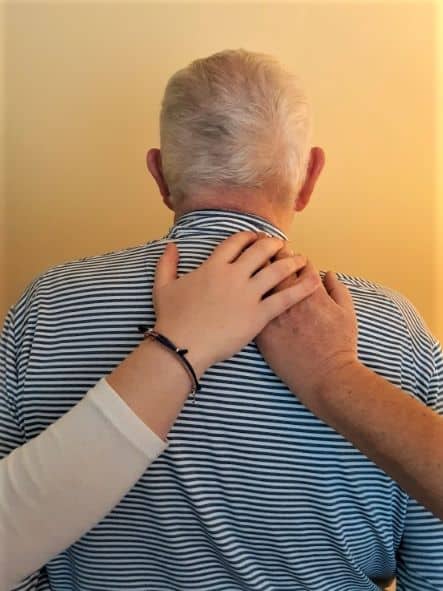
Physical therapy assistants (PTAs) are essential to us in clinical practice. They are often the eyes and ears on our patients when we are not the clinician directly treating them. Their perspectives, insight, ideas, and feedback are vital to appropriate clinical decision-making. I hope they know how much we appreciate and value them! Let’s hear what they have to say.
The Participants
Christina Venice, PTA has been a PTA for 9 years with 8.5 years in a private outpatient orthopedic clinic that specializes in manual therapy. She transitioned to home care about 5 months ago after deciding it was time for a change.
Kelley A. Gage, PTA has been in the medical field for 36 years and has been a PTA for 19 years. She has worked in many different settings, including home care, school systems, skilled nursing facilities. Kelley currently practices in the acute care setting.
Sarah Johnson, PTA has 9 years of experience and works in an outpatient setting that is affiliated with both a hospital and rehabilitation center. She treats orthopedic as well as neurological patients.
Katie LeBlanc BS, PTA has been a pediatric clinician for 4 years, working for a collaborative that sends her to a public school district as well as a private school. She treats preschool to elementary school-aged children that receive physical therapy to assist with school-related daily functional tasks.
How much collaboration do you have with the physical therapists (PTs) you work with?
Christina: For the most part in outpatient I would collaborate with the primary PT. Sometimes our conversations were little notes left in the computer, passing each other in the hallway, or just in the ‘plan’ portion of a treatment note. It also depended on the comfort level of the PT/PTA relationship.
Collaboration with a PT in home care is very short. I would usually get an email stating the patient’s information like diagnosis, medications, health history, what the home looks like, and then a very brief plan- strengthening, functional endurance, stairs, bed mobility, transfers.
Kelley: Collaboration with my PT coworkers occurs throughout the day. Some examples include communicating updates for patients’ current levels of function, treatment ideas, and updating the plan of care.
Sarah: For the most part there is a collaboration with the PTs. I will go to the PT if any issues or changes in status arise with the patients. Communication between the PT and PTA is very important. I like it when the PT checks in with us before we see a new patient, to give us a brief idea of what’s going on with that patient. That is especially true if there are any psychosocial elements we should be aware of, or if it is a complex case.
Katie: When I first started there was more consult between myself and the PTs. Now, with gained experience, I speak to my supervising PTs about once a week to touch base, and so we can be sure to be on the same page and have the correct data that will need to be presented [in Individualized Education Program (IEP) meetings]. Collaboration is also very important with the classroom teacher, OT, and physical education teacher. Those happen more daily.
What is the biggest challenge in treating patients that have been evaluated by, or are being followed by, different PTs?
Christina: I think inconsistency. I’ve been able to work with a variety of PTs which has made me a better PTA. On the flip side, sometimes the inconsistency of notes becomes hard to follow. I have treated patients in the past that were evaluated and followed by one PT for a few weeks and then transferred to another PT and myself. It helps some patients. But other times it can become difficult, especially if that patient is used to the previous PT’s treating style.
Kelley: I don’t find any challenge in treating patients that are being followed by different PTs. It enables me to be open to different treatment styles, approaches, and outcomes I may not have come up with on my own and allows me to continue to learn and grow as a therapist.
Sarah: The biggest challenge is communication, whether in person or by email, with the PTs that are not on-site full time.
I think all PTs definitely have different styles. But where I am now I don’t feel like those styles or expectations are placed on me, or that the PTs make me do things a certain way. If the PT feels that the patient is better suited with [a particular PTA] that is more likely the case.
Katie: Within my collaborative, I work under three PTs. As long as I am organized, there aren’t any challenges. My data collection is universal so I adapt that to each setting. The goals are all school-based functional so there is never anything too surprising. If anything, the hardest part is when a child comes up from preschool and enters into kindergarten because the gross motor goals can change drastically, along with their school in general.
Do you prefer having an explicit plan laid out or having the freedom to do what you want/what you feel is most appropriate for the patient?
Christina: This question is a bit difficult for me to answer because I want to say it depends, and it does. I’ve worked in a clinic where I had an amazing relationship with my fellow PTs and knew they trusted my judgment and what I had to offer. There was a huge level of trust and respect. I tend to be one that has already developed my own treatment style, but I am able to morph into another treating style, mimicking the primary PT. I think this is one of my strong points. However, I have worked with other therapists that have everything written out in the “plan” for a patient and that’s okay too.
In home care, I have yet to be given a specific “plan.”
Kelley: In acute care, most patients’ goal is to go home, but individual treatment plans are often different. Therefore, I feel that the acute care setting fosters the freedom to carry out what treatment, from my clinical experience, is most appropriate.
Sarah: I like the freedom to do what I feel is best for the patient since so much can change from the initial evaluation.
Katie: Freedom. As the PTA, I see the student weekly. I learn what they like, what they don’t like, what motivates them. With the relationship that builds I am able to produce better treatments that are enjoyable for the students. It is also important to note that with the population I am with, flexibility is key. I have to be ready to change a treatment plan based on how a student’s day is going.
Have you ever been expected to make decisions or do work that you would consider the responsibility of the PT? If so, what did you do?
Christina: I think this kind of goes along with the point made above about either having an established plan or having your own plan. I have been in situations in the past where I felt like I was running the whole treatment. I don’t know if it was because the PT was feeling overwhelmed with their caseload; they are constantly busy with reassessments and evaluations.
Kelley: I have been asked to complete work outside my scope of practice and have simply found documentation via state rules and regulations for PTAs, professionally declining to complete it, and they conceded.
Sarah: I don’t feel we should make decisions on discharges or changing a plan of care without discussions with a PT. Since there are more PTAs than PTs at the clinic, at times these decisions have been made by PTAs.
Katie: No, I have always been able to text or call a PT if there is a challenge or problem at work.
What do you like about your job, and your role as a PTA?
Christina: Well, I think what I do love about my job is the fact that I can have more treatment time with patients so I get to know them on a more personal level. For me, I think if you can get a patient to become more comfortable with you treating them then you get a more successful outcome. I think what frustrates me the most about being a PTA is the stigma that, you know? I’ve been told I’m “just an assistant” when I have experience behind me.
Kelley: I like almost everything about my job, except the fact that most of my patients don’t choose to be in the hospital or to be sick. That being said, it’s a privilege to make a positive impact on someone’s life and I find that very rewarding.
Sarah: I like the freedom of planning exercises based on how patients are doing, and it makes you feel good when patients do well.
Katie: I like that I am the constant to a student. The PT can come in and out to collect data, but they are often the ones that have to spend their days in meetings. While they are in the meetings I get to continue to treat the students and build those relationships.
The Take-Away from the PTA Perspective
Christina summed it up perfectly:
“The moral of the story and I do believe this to be true- if you have a good PT/PTA relationship with trust and communication, you will see improved patient outcomes.”

Recent Comments